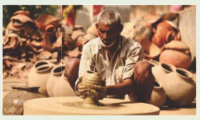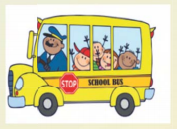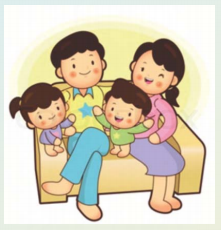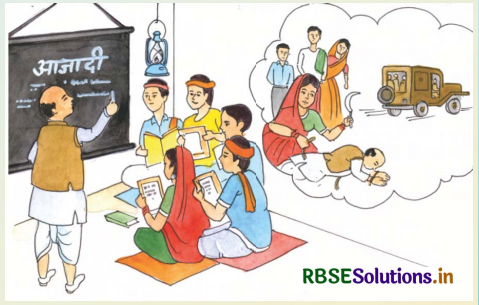RBSE Solutions for Class 5 English Chapter 14 A Gurubhakt Girl: Kalibai
Rajasthan Board RBSE Solutions for Class 5 English Let's Learn English Chapter 14 A Gurubhakt Girl: Kalibai Textbook Exercise Questions and Answers.
RBSE Class 5 English Solutions Chapter 14 A Gurubhakt Girl: Kalibai
Activity - I.
(A) Choose the correct alternatives.
सही विकल्पों को चुनिए।
Question 1.
The prince and the British were in favour of .............
(a) running the schools
(b) closing the schools
(c) opening the schools
(d) helping the schools
Answer:
(b) closing the schools
Question 2.
Kalibai saved ..............
(a) Nanabhai
(b) Thakkar bapa
(c) Sengabhai
(d) Gandhiji
Answer:
(c) Sengabhai

(B) Say whether the following statements are True or False :
बताइए कि निम्नलिखित कथन सत्य हैं अथवा असत्य हैं।
1. Nanabhai refused to close the school because he wanted to teach the students.
2. Sengabhai was a policeman.
3. Kalibai cut the rope with a knife.
4. Patriotism is to love our motherland and work for her welfare.
5. Kalibai was a teacher.
Answer:
1. True
2. False
3. False
4. True
5. False.
(C) Answer the following questions :
निम्नलिखित प्रश्नों के उत्तर दीजिए।
Question 1.
Why was the Praja mandal of Dungarpur formed ?
डूंगरपुर के प्रजा मंडल की स्थापना क्यों की गई थी?
Answer:
Praja mandal of Dungarpur was formed to conduct a campaign against the unjust closing of schools and demanding the end of colonial rule.
डूंगरपुर के प्रजा मडण्ल की स्थापना विद्यालयों को अनुचित रूप से बन्द करने के विरुद्ध तथा औपनिवेशक शासन के अंत की माँग हेतु अभियान चलाने के लिए की गई थी।
Question 2.
Who was Nanabhai Khant ? What did he do ?
नानाभाई खांट कौन थे? वे क्या करते थे?
Answer:
Nanabhai Khant was a teacher. He taught the students about patriotism and bravery.
नानाभाई खांट एक शिक्षक थे। वे विद्यार्थियों को देशभक्ति तथा बहादुरी के विषय में पढ़ाते थे।
Question 3.
Why did the police take Sengabhai dragging on the road ?
पुलिस सेंगाभाई को सड़क पर घसीटते हुए क्यों लेकर गई थी?
Answer:
Police did so because he had continued to teach the children, despite Nanabhai's death.
पुलिस ने ऐसा इसलिए किया क्योंकि वह नानाभाई की मृत्यु होने के बावजूद भी बच्चों को शिक्षित कर रहे थे।

Question 4.
Who was Kalibai ? What did she do?
कालीबाई कौन थी? उसने क्या किया था?
Answer:
Kalibai was a brave thirteen year old girl who was a student of Sengabhai. When the police tied Sengabhai behind their truck and took him away, dragging him on the road, she ran behind the truck and freed Sengabhai by cutting the ropes with a sickle.
कालीबाई एक तेरह वर्षीय बहादुर कन्या थी जो सेंगाभाई की एक विद्यार्थी थी। जब पुलिस वाले सेंगाभाई को अपनी लॉरी के पीछे बाँधकर सड़क पर घसीटते हुए लेकर जाने लगे, तब कालीबाई ने लॉरी के पीछे दौड़कर, हँसिया की मदद से रस्सियों को काटकर सेंगाभाई को मुक्त कर दिया था।
Activity - II.
(A) Fill in the blanks with missing letters :
लुप्त वर्णों को लिखकर रिक्त स्थानों को भरिए।
(a) m _ vem _ nts
(b) pr _ nc _
(c) c _ mp_ _ gn
(d) p_tr_ot_sm
(e) P_ l _ ce
(f) unc _ nsc _ o _ s
Answer:
(a) movements
(b) prince
(c) campaign
(d) patriotism
(e) police
(f) unconscious.

(B) Arrange the following words according to their order in the dictionary. Write them in your notebook.
निम्नलिखित शब्दों को शब्दकोष के अनुसार क्रम में लगाइए। इन्हें अपनी नोट बुक में लिखिए। |
vehicle, police, prince, protest, teacher, rope, murder, traditional, thirteen, today, activist
Answer:
activist, murder, police, prince, protest, rope, teacher, thirteen, today, traditional, vehicle.
Activity - III.
Read the following sentences.
निम्नलिखित वाक्यों को पढ़िए।
Study the following sentences and observe the use of the word 'the' in them.
निम्नलिखित वाक्यों को पढ़िए एवं उनमें 'the' शब्द के इस्तेमाल को गौर से देखिए।
Kalibai ran towards the truck with a sickle to cut the ropes and free Sengabhai. She reached her teacher and cut the rope with one stroke of the sickle. When we talk about a singular countable noun for the first time in a sentence (not specific), we commonly use indefinite article 'a', 'an'. But when we talk about the same thing in the next sentences we use article the' before it. The article 'the used in this way is called the referent use of the definite article 'the'. Thus the article the' here is a definite article.. Besides this we use the' for tall ing about the unique, the definite and universal and specific things in a place/ situation.
For example जब हम किसी वाक्य (विशिष्ट नहीं) में पहली बार किसी singular countable noun के विषय में बात करते हैं, तब हम सामान्यत: indefinite article 'a' अथवा 'an' का इस्तेमाल करते हैं। परन्तु जब हम उसी वस्तु के विषय में उसके बाद के वाक्यों में बात करते हैं, तब हम उससे पहले article the' का प्रयोग करते हैं। Article the' के इस प्रकार के प्रयोग को हम definite article the' का 'referent use' कहते हैं। अतः यहाँ पर article the' एक definite article है। इसके अलावा, हम 'the' का प्रयोग किसी स्थान/स्थिति में मौजूद विचित्र, निर्दिष्ट, सर्वव्यापी एवं विशिष्ट वस्तुओं के बारे में बात करने के लिए करते हैं। उदाहरण के लिए
The sun, the moon, the sky, the stars, the world
The is also used before the names of
The mountain ranges as the Aravalis
The groups of islands as the Andmans
The big rivers as the Ganga
The historical buildings and monuments as the
Taj Mahal The holy books as the Ramayan
The musical instruments as the Flute
The directions as the North

The magazines, newspapers as the Champak, the Rajasthan Patrika Now fill in the blanks with a/an/the. 379 a/an/the fri
1. ...........earth revolves round the sun.
2. I am ............ student of class V.
3. English is ............ interesting subject.
4. Kota is situated on the bank of ........ Chambal.
5. My brother is ............ engineer.
6. A Bhopa of Devnarayanji plays on .............. Jantar.
7. ..... Mehrangarh fort is in Jodhpur
8. Kalibai was ............ brave girl.
9. The cow is ............. holy animal.
10. ........camel is called ............ ship of the desert.
11. I have a bunch of keys. ........... bunch has many keys in it.
12. I have a bat and a racket at home. I use ............. bat to play cricket and ............ racket to play tennis.
Answer:
1. The,
2. a,
3. an,
4. the,
5. an,
6. the,
7. The,
8. a,
9. a,
10. A, the
11. The,
12. the, the
Activity - IV.
In the lesson you read the words teacher, activist, student etc. Listen to your teacher reciting the poem given below and follow him/her.
पाठ में आपने teacher, activist, student sri ya पढ़ा है। अपने अध्यापक/अध्यापिका को नीचे दी गई कविता को पढ़ते हुए सुनिए एवं उनका अनुसरण कीजिए।
A singer sings songs.
A weaver weaves clothes.
A dancer moves body.
A potter makes pots

गायक गाने गाता है।
बुनकर कपड़े सिलता है।
नर्तक शरीर मटकाता है।
कुम्हार बर्तन बनाता है।

A priest worships God.
A soldier serves in the army.
A teacher teaches us.
A beggar begs for money.

पुरोहित ईश्वर की पूजा करता है।
सिपाही सेना में नौकरी करता है।
शिक्षक हमें पढ़ाता है।
भिखारी पैसों के लिए भीख मांगता है।
A driver drives a vehicle.
A writer writes prose.
A shopkeeper sells things.
A customer buys those.

चालक वाहन चलाता है।
लेखक लिखता है।
दुकानदार सामान बेचता है।
ग्राहक उन्हें खरीदता है।
A painter paints pictures.
A doctor treats patients.
An ironsmith makes things of iron.
A goldsmith makes ornaments.

पेन्टर तस्वीर में रंग भरता है।
चिकित्सक बीमारों का इलाज करता है।
लुहार लोहे के सामान बनाता है।
सुनार आभूषण बनाता है।

Brother and sister play together.
Father takes our care.
Mother always loves us,
Moving fingers in hair.

भाई एवं बहिन साथ-साथ खेलते हैं।
पिताजी हमारी देखभाल करते हैं।
माँ हमारे बालों को सहलाते हुए,
हमें हमेशा प्यार करती हैं।
Activity - V.
Yesterday you saw an accident in which a girl was injured badly.
Write in five sentences what you did to save the girl.
कल आपने एक दुर्घटना देखी जिसमें कि एक बालिका गम्भीर रूप से घायल हो गई थी। पाँच वाक्यों में लिखकर बताइए कि आपने बालिका को बचाने हेतु क्या किया।
Answer:
1. I brought her to the edge of the road from the middle with the help of other people.
2. I give her first aid.
3. I called the doctor.
4. I informed her parents.
5. I tried to make her feel comfortable.
1. मैं अन्य लोगों की सहायता से उस बालिका को सड़क के मध्य भाग से किनारे पर लाया।
2. मैंने उसका प्राथमिक उपचार किया।
3. मैंने चिकित्सक को बुलाया।
4. मैंने उसके माता-पिता का सूचित किया।
5. मैंने उसे सुख महसूस कराने की चेष्टा की।
Q. Who gave his thumb to his Guru in Gurudakshina?
किसने अपने गुरु को गुरुदक्षिणा में अपना अंगूठा दे दिया?
Answer:
Eklavya gave his thumb to his Guru in Gurudakshina.
एकलव्य ने अपने गुरु को गुरुदक्षिणा में अपना अंगूठा दे दिया।

Q. Do you know some great pupils wholoved their Guru?
क्या आप कुछ ऐसे महान शिष्यों को जानते हैं जो अपने गुरु से प्रेम करते थे?
Answer:
Yes, I know about some great pupils who loved their Guru. They are Chaitanya Mahaprabhu, Shri Maharishi Mahesh Yogi, Shri Ramakrishna Paramhans and Goswami Tulsidas.
हाँ, मैं कुछ महान शिष्यों को जानता हूँ जो अपने गुरु से प्रेम करते थे। वे हैं- चैतन्य महाप्रभु, श्री महर्षि महेश योगी, श्री रामकृष्ण परमहंस एवं गोस्वामी तुलसीदास।
In Rajasthan there was a girl whọ sacrificed her life to save her guru. राजस्थान में एक ऐसी कन्या थी जिसने अपने गुरु को बचाने हेतु अपने जीवन का बलिदान दे दिया था।
Let's read about such a great Gurubhakt girl.
आइए ऐसी महान गुरुभक्त कन्या के विषय में पढ़ें।

A Gurubhakt Girl: Kalibai Summary and Translation in Hindi
Kalibai was .............. people's protest. (Pages 35-36)
Word-meanings-teenaged (टीनेज्ड) = किशोरवय। mostly (मोट्लि) = प्रायः| princely (प्रिन्स्लि ) = शाही। states (स्टेट्स) = राज्य। loyal (लॉयल) = वफादार। British (ब्रिटिश) - = अंग्रेज लोग। Quit India Movement (क्विट इण्डिया मूवमन्ट) = भारत छोड़ो आंदोलन। announced (अनाउन्स्ट) = घोषित किया। opposition (ऑपज़िशन) = विरोधी। colonial rule (कलोनिअल रूल) = औपनिवेशिक शासन। social (सोशल) = सामाजिक। activists (ऐक्टिविस्ट्स) = सक्रिय प्रतिभागी।
inspired (इन्स्पाइअर्ड) - प्रेरित होना। Gandhian (गान्धिअन) = गाँधीवादी। leader (लीड्ों) = नेता। established (इस्टैब्लिश्ट) - स्थापित। district (डिस्ट्रिक्ट) = जिला। taught (टॉट) = शिक्षित करते थे। patriotism (पेट्रिअटिज़म) = देश-भक्ति। bravery (ब्रेवरि) = बहादुरी। forced (फॉर्स्ट) = दबाव डाला। prince (प्रिन्स) = राजकुमार । running (रनिंग) = संचालन करना। result (रिज़ल्ट) = परिणाम। organisation (ऑगनाइज़ेशन) = संगठन। conduct (कन्डक्ट) = चलाना/संचालन करना।
campaign (कैम्पेन) = अभियान। unjust (अन्जस्ट) = अनुचित । demanding (डिमैन्डिंग) = मांगना। end (एन्ड) = अंत। cruel (क्रूअल) = निर्मम। action (एक्शन) = कार्यवाही। beating (बीटिंग) = पिटाई। workers (वॅक:ज) = कार्यकर्ता। jail (जेल) = कारागृह। intensified (इन्टेन्सफाइड) = तीव्र। protest (प्रोटेस्ट) = विरोध।
हिन्दी अनुवाद- कालीबाई एक किशोरवय भील कन्या थी। वह सन् 1940-50 के बीच डूंगरपुर के रास्तापाल गाँव में रहती थी। उन दिनों राजस्थान प्रायः शाही राज्यों के अधीन था जो अंग्रेजों के वफादार थे। 9 अगस्त 1942 को जब भारत छोड़ो आंदोलन की घोषणा की गई, तब लोग औपनिवेशिक शासन के खुले विरोध में सड़कों पर आ गए। गाँधीवादी नेता ठक्कर बापा से प्रेरित होकर दूंगरपुर के सक्रिय सामाजिक प्रतिभागियों ने डूंगरपुर सेवक संघ की स्थापना की। सेवक संघ जिले के दलितों एवं आदिवासियों के लिए विद्यालयों का संचालन करता था।
वे विद्यार्थियों को देशभक्ति एवं बहादुरी के विषय में शिक्षित करते थे। अंग्रेजों ने डूंगरपुर के राजकुमार पर सेवक संघ द्वारा संचालित इन विद्यालयों को रोकने हेतु दबाव डाला। परिणामस्वरूप विद्यालयों को अनुचित रूप से बन्द करने के विरुद्ध तथा औपनिवेशिक शासन के अंत की मांग करने हेतु अभियान चलाने के लिए प्रजा मंडल नामक संगठन की स्थापना की गई। राजकुमार ने प्रजा मंडल के कार्यकर्ताओं के साथ मारपीट करने तथा उन्हें कारागृह में भेजने की निर्मम कार्यवाई की। इस घटना ने जनसमूह के विरोध को और तीव्र कर दिया।

The state ............. died. (Pages 36-37)
Word-meanings-police (पॅलीस) = पुलिस। refused (रिफ्यूज्ड) = अस्वीकृत कर दिया। severely (सिविअर्लि) = निर्दयतापूर्वक। unconscious (अन्कॉन्शस) - बेहोश। however (हाउएवर) - परन्तु। injuries (इन्जरीज़) - ज़ख्म। camp (कैम्प) = शिविर । despite (डिस्पाइट) = के बावजूद। truck (ट्रक) = लॉरी। dragging (ड्रैगिंग) - घसीटना। towards (टवॉड्ज़) = की तरफ़। sickle (सिक्ल) = हंसिया। warned (वॉ:न्ड) = आगाह। vehicle (वीइकल) = गाड़ी। listen (लिस्न) = ध्यान देना/ध्यानपूर्वक सुनना। stroke (स्ट्रोक) | - प्रहार | angry (ऍग्रि) = कुपित । bent down (बेन्ट डाउन) = नीचे झुका। shot (शॉट) = गोली मार दी। back (बैक) = पीठ।
हिन्दी अनुवाद-19 जून 1947 को राज्य की पुलिस उस विद्यालय को बन्द कराने हेतु रास्तापाल गाँव में गई, जो नानाभाई खाँट के घर में संचालित किया जा रहा था। नानाभाई ने विद्यालय को बन्द करने से इन्कार कर दिया। तत्पश्चात् पुलिस ने नानाभाई को निर्दयतापूर्वक मारा। वह बेहोश होकर गिर गए। वे उन्हें अपने साथ कारागार में डालने हेतु ले गए। परन्तु इससे पहले कि | पुलिस अपने शिविर तक पहुँच पाती, नानाभाई की अपने ज़ख्मों के कारणवश मृत्यु हो गई। तत्पश्चात् पुलिस ने शिक्षक सेंगाभाई भील को पीटा जो नानाभाई की मृत्यु के बावजूद भी बच्चों को पढ़ा रहे थे।
सेंगाभाई को पीटने के पश्चात पुलिस ने उनको अपनी लॉरी से बाँध दिया। वे उन्हें सड़क पर घसीटते हुए लेकर गए। विद्यालय की कालीबाई नामक एक विद्यार्थी यह सब नहीं देख पाई। वह रस्सियों को काटकर सेंगाभाई को मुक्त कराने हेतु हँसिया लेकर लॉरी की तरफ भागी। पुलिस ने उसे आगाह किया कि वह गाड़ी के पीछे नहीं भागे, परन्तु उसने उन पर ध्यान नहीं दिया। वह अपने शिक्षक तक पहुँच गई तथा हँसिया के एक ही प्रहार से उसने रस्सी को काट दिया। पुलिस इससे कुपित हो गई और जैसे ही कालीबाई सेंगाभाई को मुक्त करने हेतु नीचे झुकी, उन्होंने उसकी पीठ पर गोली मार दी। कालीबाई बेहोश होकर नीचे गिर पड़ी और मर गई।

This ............... in Rastapal. (Page 37)
Word-meanings-murder (मॅ:ों ) = हत्या। assembled (असेम्बल्ड) = एकत्र हो गए। surrounding (सराउन्डिंग) = आस-पास का। massive (मैसिव) = भीमकाय, बड़ा। armed (आ:म्ड) = शस्त्र-सज्जित। bows (बोज़) = धनुर्षों। arrows (ऐरोज़) = बाणों। swords (सॉ:ड्ज़) = तलवारों। traditional (ट्रडिशनल) = पारंपरिक। drums (ड्रम्ज़)- नगाड़े। gathered (गैदर्ड) - इकट्ठा किया गया। town (टाउन) = नगर। release (रिलीज़) - रिहा करना। constructed (कन्स्ट्रक्टड)= निर्मित किया गया। statue (स्टेच्यू) = प्रतिमा।
हिन्दी अनुवाद-विद्यालय की छात्रा जो अपने शिक्षक की रक्षा करने की कोशिश कर रही थी, की हत्या ने भील आदिवासियों को कुपित कर दिया था। वे आस-पास के गाँवों से एकत्रित होने लगे। बारह हजार लोगों का एक भीमकाय समूह, धनुषों, बाणों तथा तलवारों से पूर्णत: शस्त्र-सज्जित होकर, अपने पारंपरिक नगाड़ों के साथ नगर में इकट्ठा हो गए। राजकुमार को प्रजा मंडल के नेताओं को कारागृह से मजबूरीवश रिहा करना पड़ा। गाँव के लोगों ने रास्तापाल में उस बहादुर तेरह वर्षीय लड़की-कालीबाई की एक प्रतिमा का निर्माण करवाया।
